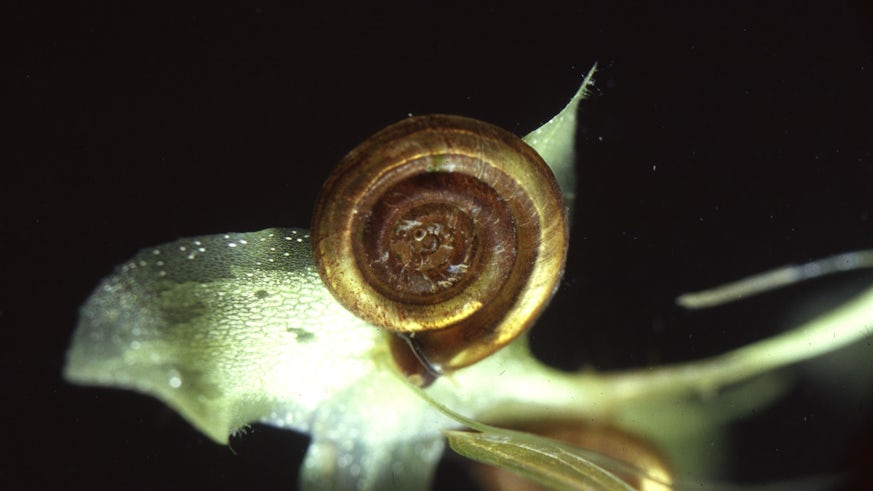Save the snail
25 April 2016

New measures taken to conserve one of Britain’s rarest animals.
Recent large-scale measures to conserve one of Britain’s rarest animals – the diminutive ‘Little Ramshorn Whirlpool Snail’ (Anisus vorticulus) – have benefitted from key research that was carried out by Cardiff University School of Biosciences 15 years ago.
The Department for Environment Food and Rural Affairs and its major advisor, the Joint Nature Conservation Committee, have recently designated a 3,500 hectare area of the Arun Valley in south-east England as a Special Area of Conservation (SAC) for this species under the EU Habitats Directive. The new designation encompasses also the Royal Society for the Protection of Birds’ (RSPB) Pulborough Brooks Nature Reserve.
The total SAC area - about 1.2 times the size of the City of London - now has Europe's highest possible level of protection, and reflects the rarity of the Little Ramshorn as well as its perilous decline caused by habitat loss in wetlands and drainage channels on lowland grasslands.
Dr Alisa Watson (now Alisa Swanson) studied the ecology of this species throughout south-east England for her PhD in Cardiff University’s School of Biosciences from 1998-2002. Through her conservation research papers, Alisa showed how Little Ramshorns need clean, unpolluted wetlands with specific vegetation types. Her work also revealed that the snails must have extensive habitat areas over which they can disperse and maintain effective populations. This recipe has been followed to the letter in the newly designated area, which Alisa found to be one of the snail’s last British strongholds.
Professor Steve Ormerod, who co-authored the papers, suggests that the benefits of protecting special places extend way beyond the target species:
“Designating such a large area is crucial not just for Little Ramshorns, but for a range of other plants and animals that share its wetland habitats. Although a humble snail, our evidence shows that this is among a group of ‘umbrella’ species that characterise very special environments where many other species can be protected. Wetland areas such as the Arun Valley also serve critical needs for people – for example in reducing flood risk, purifying water and storing carbon”
The School’s freshwater ecosystem research is a core strength of the new Cardiff University Water Research Institute, interfacing biosciences with physical, engineering and social sciences.
The Institute’s Director, Dr Isabelle Durance, added:
“This is just one small example where our water research can have public benefit. Water is not only critical for supply, it is also crucial to the maintenance of natural environments that provide both for nature and for human wellbeing. Balancing these needs will be among the key themes of the Water Research Institute’s work”
Alisa Swanson – now lead advisor on land management and conservation for Natural England – carried out her PhD in collaboration with the Wildfowl and Wetland Trust and the Conchological Society (Dr Martin Wlling) under funding from the Natural Environment Research Council and the Environment Agency. Her evidence was used by these and other organisations including the invertebrate charity ‘Buglife’ in identifying the need for the new Special Area of Conservation.

